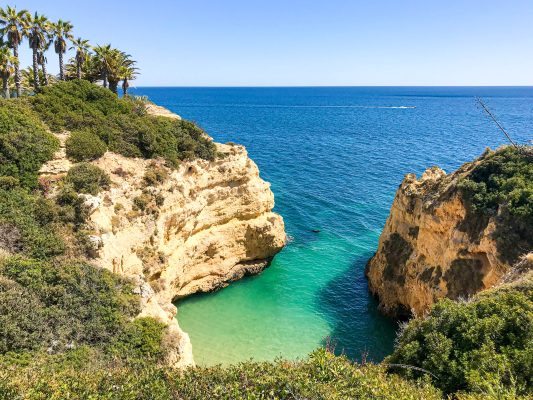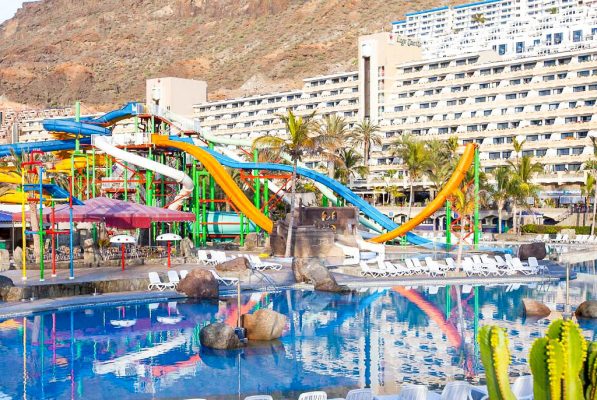French Riviera Travel Guide – transportation, hotels, tips + itineraries for 3, 5 and 7 days

A complete French Riviera travel guide with all the information you need regarding hotels, restaurants, transportation and the best travel tips for those visiting the region. We’ve also included three different itineraries with everything you should see and do in the French Riviera in 3, 5 or 7 days.
Known for decades as the playground for the wealthy and famous, the French Riviera has earned itself a reputation as an exclusive vacation destination, in part thanks to the postcard images of the yachts of Saint Tropez, the extravagances of Monte-Carlo or the sights of celebrities parading through Cannes. However, the massification of tourism, along with all of its good things and drawbacks, has also led to the democratization of these type of destinations, allowing the average European citizen to now enjoy places and experiences that were once reserved only for the elite.
Yet, the French Riviera – also known as the Côte d’Azur – offers much more than just sun, sand and luxury. In fact, this is also a region of breathtaking landscapes, quaint medieval villages and a rich cultural heritage. That said, while the timeless hotspots remain as charming and glamorous as ever, venturing off the beaten path reveals a more genuine and human side to one of Europe’s most picturesque regions.
So, if you’re planning a trip to this stunning destination, our ultimate French Riviera travel guide is here to help. In addition to practical information about hotels, restaurants, transportation and travel tips, we’ve also put together three comprehensive itineraries, including all the places you must see and visit in the French Riviera in 3, 5 or 7 days.
French Riviera Travel Guide
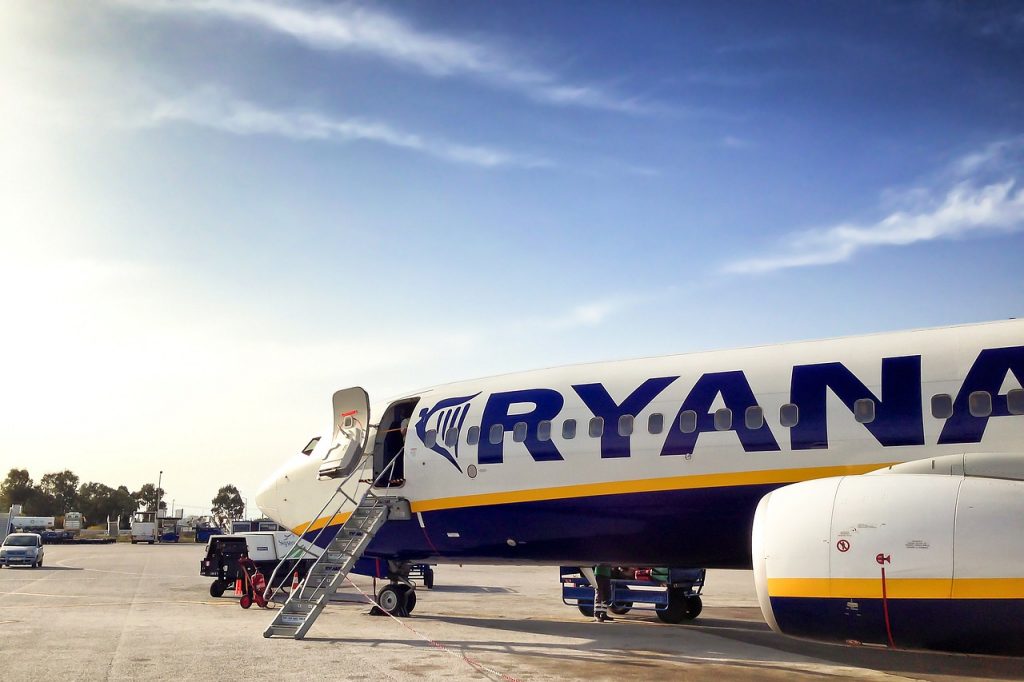
How to get to the French Riviera – Flights from Ireland
Considered the biggest city in the French Riviera, Nice is the main gateway to the region and is served by the third busiest international airport in France: the Nice Côte d’Azur Airport.
As such, if you’re traveling from Ireland, it is possible to fly directly to Nice from Dublin with Aer Lingus and Ryanair.
How many days do I need to visit the French Riviera?

Tricky question. Actually, experiencing the Côte d’Azur can be done just as well over a long weekend as it can over a more extended period. It really depends on the type of experience you’re after and, particularly, the number of stops you’ve planned along your route.
So, if you’d like to do something shorter that only includes Nice and Monaco (another pin for your map), three days will be enough. Beyond that, you can easily spend a week to several months without running out of things to do or places to visit. However, if we only consider the classic stops of Saint Tropez and Cannes, along with the charming towns of Menton and Villefranche-sur-Mer, a full 7 days will allow you to build a pretty interesting itinerary.
French Riviera Travel Guide – Best time to visit the region

Located in the mild and sunny southwest of France, close to the border with neighboring Italy, Spring, Summer and Fall are definitely the most sought-after months when it comes to booking a trip to the French Riviera, with the period between May and September standing out as the most researched. However, keep in mind accommodation prices will be through the roof in the peak of Summer and crowds will definitely be a thing! Especially when visiting smaller towns, the amount of people can be downright overwhelming at times.
On the other hand, you may choose to visit during shoulder-season, when temperatures tend to be more pleasant, the streets less crowded and the prices smaller. After all, the region is famous for boasting around 300 days of sun a year, so it’s not like you risk catching bad weather if you choose to visit in the off-season!
French Riviera Travel Guide – Documents needed for your trip
Since France is part of the EU, Irish citizens only need to show a valid ID Card in order to be granted access to the country.
French Riviera Travel Guide – Withdrawals, banking fees and travel budget

Since France is part of the Eurozone, just like Ireland, there is no currency exchange, with both nations using the Euro. As such, travelers are able to use the same credit/debit card that they utilize back at home without incurring in any fees. However, keep in mind some local banks or networks (such as the infamous Euronet ATM’s) may charge you a flat fee per withdrawal upon detecting that you’re using a foreign card.
Nevertheless, and so that you can get a tighter grip on your travel budget and things don’t slide out of control, we always recommend using Revolut. Although in Italy you won’t be able to take advantage of the card’s most redeeming quality – to allow you to withdraw foreign currency without any exchange fees – this is still a pretty useful tool.
By using the bank’s online app, you will have immediate access to your balance, as well as all your expenses, allowing you to check in real time whether you’ve been charged any fees for your withdrawals or not. Besides, you may just load your card with the exact daily amount you want to spend on your trip, helping you to avoid overspending and going over your budget. Plus, if you find yourself in a situation where your card got lost or stolen, the only money you stand to lose is amount you had loaded your card with. Sign up for Revolut for free >> to get 3 months of Premium.
French Riviera Travel Guide – Common scams and frauds
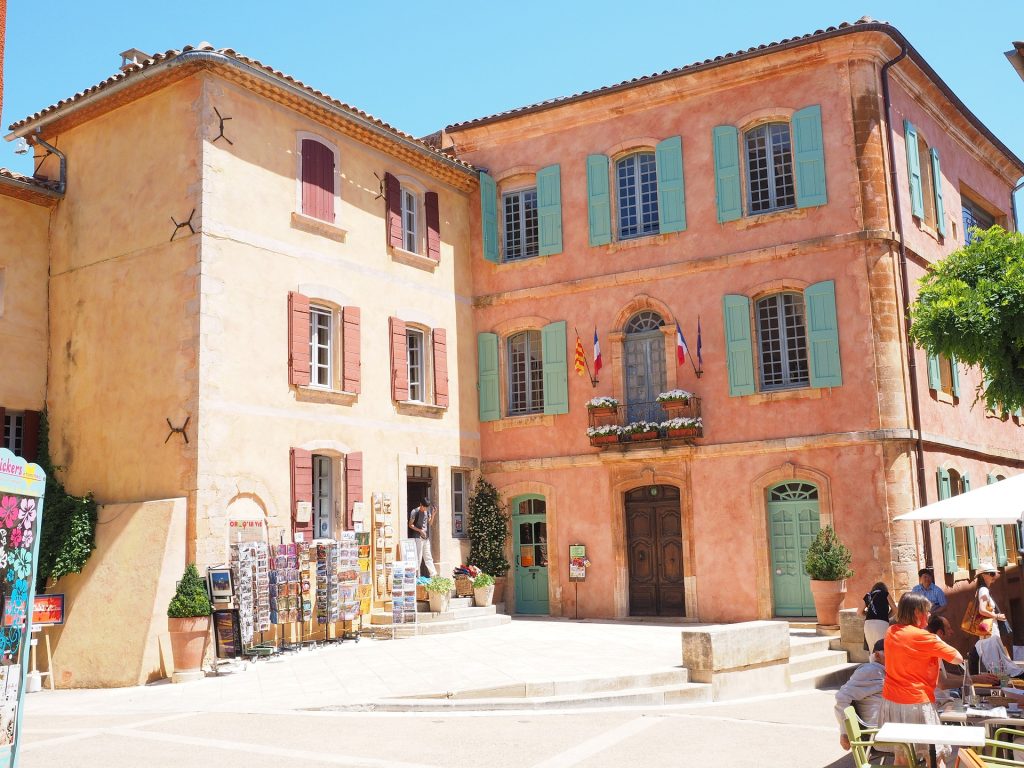
Unsurprisingly, given its status as a major tourist hotspot, the French Riviera is an extremely safe destination, with Nice ranked as the 3rd safest city in the country (among the largest) according to readers of Le Parisian in 2024. Despite the tragic terrorist attack in 2016 on the Promenade des Anglais, which claimed 84 lives, time has shown this was nothing but an isolated incident.
However, and much like you would do in any other big city, using your common-sense is key. That means no taxis whose drivers refuse to start the meter, no accepting help from strangers when you’re using an ATM or trying to buy metro tickets and always keeping an eye out for your stuff when you’re walking through busy areas. To sum up: don’t do anything you wouldn’t feel comfortable doing in any other city! Specifically in the French Riviera, pay close attention to your belongings and don’t leave them unattended when going for a swim, especially on the most popular beaches.
Regarding scams and frauds, while there aren’t significant issues to report, it’s recommended to be careful when ordering at restaurants in tourist areas. Always double-check prices on the menu before placing your order, otherwise you may end up with a very unpleasant surprise in hands when the bill arrives.
Where to sleep in the French Riviera – Hotels and Accommodation
If you’re looking out for a place to stay on our French Riviera travel guide, then we got you covered!
Similarly to many other French cities/regions highly dependent on tourism money to survive, hotel prices in the Côte d’Azur are also generally high… like, very high! This is obviously made worse by the region’s status as a rather exclusive and celebrity-riddled destination. Though flight rates tend to actually be quite reasonable (especially outside peak tourist season), accommodation and meals will quickly leave a dent on your budget, so get ready for a pricey experience.
That being said, here are some options based on the cities we recommend you to stay at:
Hotels in Nice
- Hostel: Hostel Ozz Nice
- €: ibis Nice Centre Gare
- €€: ibis Nice Centre Notre-Dame
- €€€: Mercure Centre Nice Notre Dame
- €€€€: Le Meridien Nice
Hotels in Cannes
- €: Hôtel P.L.M.
- €€: Villa Pruly Hotel Cannes Centre
- €€€: Hotel Splendid
- €€€€: Hôtel Martinez, in The Unbound Collection by Hyatt
Hotels in Saint Tropez
- €: Chambres d’Hotes Les Amandiers
- €€: Hotel La Garbine
- €€€: La Ferme D’Augustin
- €€€€: Sezz Saint-Tropez
Hotels in Menton
French Riviera Travel Guide – Transportation between Nice Airport and the city center
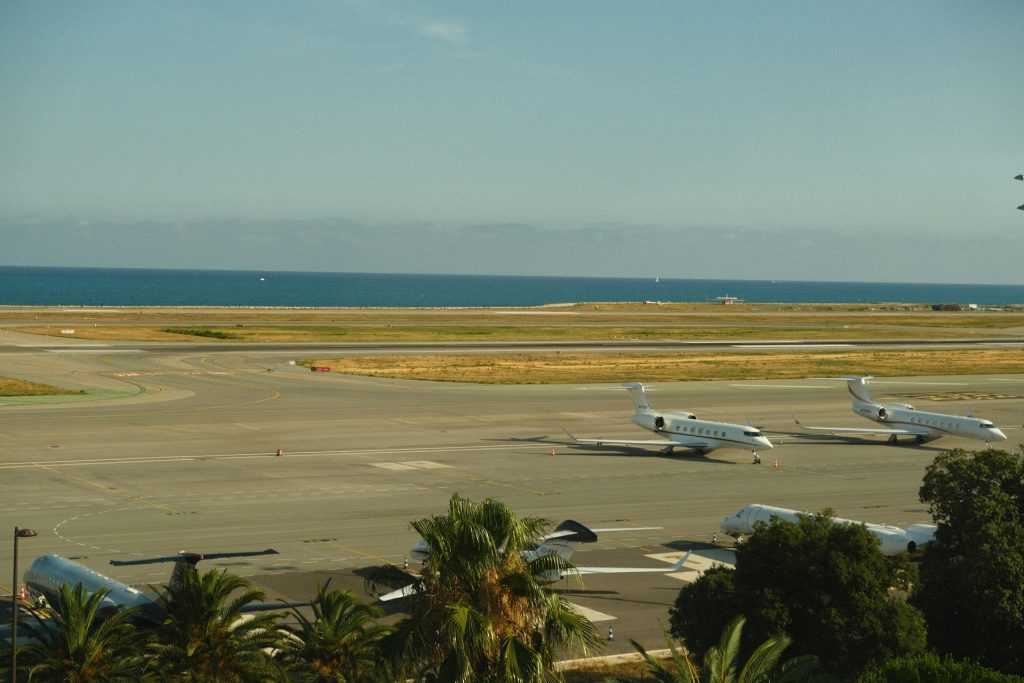
The best way to travel between Nice Airport and the city center is to take Line 2 of the local tram system. These vehicles operate every single day from 05h00 and midnight, with a new tram leaving every 5 minutes during rush hour (until a maximum waiting time of 15 minutes at night). The journey takes less than 25 minutes and you can get out at Alsace Lorraine, Masséna, Durandy or Garibaldi, all located in the downtown area. As for prices, if you buy your ticket at the airport the total fare will be €10,00 for the round-trip. However, this is a total rip-off, since regular tickets only cost €1,70 one-way. To avoid this “scam”, you can simply board the tram and get out at the first stop outside the airport (Grand Arenas), since this small portion of the trip is actually free. Once you arrive at this station, you can simply use the ticket machines to buy an ordinary rechargeable card for €2,00 (it can be shared among different travelers) and then top it up with the amount needed for the regular fare: €1,70! Alternatively, you may just download the Lignes d’Azur Tickets app, get yourself a free virtual rechargeable card and load it with as many individual trips as you need. In this case, you don’t even need to get out at Grand Arenas. Just board the tram at the airport, scan you phone ticket at the machines and keep an eye out for your final station.
As an alternative to the tram, you may choose to hop on bus nº 12 heading to Palais des Expositions instead, since this route goes through the Promenade des Anglais, Place Masséna and the Old Town (Vieille Ville). The bus runs between 06h00 and 00h30, with waiting times ranging between 10 and 40 minutes, depending on the time of day. The journey to the city center takes about 40/45 minutes. The ticket costs exactly the same as the tram if you buy it through the app (€1,70), though you can also pay directly to the driver in cash. In this case, however, the bus ride will set you back €4,00.
French Riviera Travel Guide – How to move around between cities
Despite the challenging terrain, the French Riviera boasts a well-developed intercity transportation network, served by both trains – which are especially convenient for travel between coastal cities – and buses, great for those wishing to visit the smaller inland villages.
Additionally, renting a car provides the freedom to tailor and adapt the itinerary according to your own pace and preferences. Be that as it may, it’s always good to have different options on the table!
Trains in the French Riviera

Given France’s historically robust investment in its railway infrastructure, trains are the best way of traveling around the French Riviera. Unfortunately, regular train lines only connect the main coastal cities, so you’ll have to rely on alternative modes of transportation if you want to reach smaller inland villages. Nonetheless, when it comes to convenience, comfort, cleanliness and efficiency, nothing beats the trains. Besides, among the destinations covered in our itineraries, only Saint-Tropez isn’t served by a railway station, with the nearest one located approximately 40km away (Saint-Raphael – Valescure).
While you can easily purchase tickets on the day of your trip, booking online through the official SNCF website can come in handy if you want to plan things ahead or take advantage of any available promo. Regardless, here is some info for the most common train connections along the Côte d’Azur:
- Nice – Monaco: €4,90; 20 minutes
- Nice – Villefranche-sur-Mer: €2,50; 7 minutes
- Nice – Menton: €6,40; 35 minutes
- Nice – Cannes: €8,40; 40 minutes
- Monaco – Menton: €2,90; 10 minutes
- Monaco – Cannes: €11,30; 60 minutes
Alternatively, travelers can also explore one the region’s two scenic railway lines. Known as Train des Merveilles (€17,00) and Train des Pignes (€23,00), these seasonal routes connect Nice to Tende and Digne-les-Bains, respectively. The journeys, which can take a full day, offer breathtaking views of the Maritime Alps, and are constantly ranked among Europe’s most picturesque train rides. Although our itineraries don’t include these options due to time constraints, they are certainly worth considering!
Buses in the French Riviera

As mentioned earlier, buses provide the best way to travel between the coast and the more rural, inland villages, with the exception of the world-famous Saint-Tropez. In fact, the latter is the only destination in our itineraries where you can’t rely on the railways. Regarding the buses, all intercity routes within the Côte d’Azur are managed by Zou!, a sort of aggregator for smaller local transportation companies, with ticket prices fixed at €2,50, regardless of the distance.
Thankfully, these routes are also integrated into Google Maps, so you just need to simply write your starting point and destination, and the platform will suggest the appropriate bus (train options are also displayed). Still, here are some of the most popular bus routes:
- 607 – Nice to Monaco, stopping at coastal towns
- 112 – Nice to Monaco, stopping at inland towns
- 608 – Nice to Menton
- 200 – Nice to Cannes
- 876 – Saint-Raphael – Valescure to Saint-Tropez
While tickets can be bought directly from the bus driver, by using the Zou! app you get access to a reduced fare of €2,10 per journey. Moreover, you won’t need to worry about having exact change. Alternatively, for frequent users, a strip of 10 tickets can be purchased for just €14,70 (available exclusively at company offices).
SUD AZUR Explore Pass
With that said, if you’re planning to rely heavily on public transportation during your journey through the French Riviera, it might be worth considering the SUD AZUR Explore Pass. This single card covers the entire region of the Alpes-Maritimes (which includes the Côte d’Azur) and grants access to all trams and public buses, urban and suburban trains operated by SNCF, and all the suburban buses operated by Zou!, for the a selected period. You can get your pass from any ticket machine at all Lignes d’Azur stations, at the train station in Nice, or from any of the Zou! sales point.
As for rates, there are three available options:
- 3 days: €35,00
- 7 days: €50,00
- 14 days: €80,00
Renting a car in the French Riviera

While we understand the excitement behind the prospect of taking a road trip along the Côte d’Azur, it’s best to keep a couple of things in mind before taking that leap. If you’re thinking of visiting during the off-season, then renting a car for your journey might indeed be a great idea.
However, and especially during the Summer months as crowds begin to pile up, having a car can often become more of a hassle than a benefit, especially when public transportation is this good and readily available (especially around the coast). Apart from having to deal with chaotic traffic (rush hour is nuts) and lack of free parking (or any parking at all), drivers in the region are known for their aggressive behavior and “relaxed” attitude towards rules.
Nonetheless, if you’re used to driving along winding coastal roads and don’t let traffic stress affect you too much, there’s no beating the unmatched autonomy and flexibility only a car provides. You can check prices and availability on Rentalcars.com!
French Riviera Travel Guide – Free walking tours in Nice

While in Nice, you have the option to explore the Old Town with a free walking tour. These tours, led by local guides or tour companies, offer guided visits to the historic center, sharing intriguing stories about each place and providing valuable cultural context. Even though these tours are technically free, it’s customary to show appreciation for the guide’s efforts by leaving a tip at the end. In Nice, a reasonable minimum tip would be around 8,00€.
That being said, here are a few companies that run free walking tours in Nice:
French Riviera Travel Guide – Hidden gems of the region

Well, we have all heard of the likes of Nice, Monaco, Saint-Tropez or Cannes, and though there are certainly many reasons why these have become the tourism heavyweights of the Côte d’Azur, that doesn’t mean there aren’t other places worthy of a visit, both along the coast or hidden away in the subjective remoteness of the Maritime Alps.
That being said, and because we believe a good traveler must always be able to explore beyond the obvious, we wanted to add a few more obscure places to your list of places to visit along the French Riviera:
Antibes: Located between Cannes and Nice, this city offers the perfect mix of culture, nature and rest, with its fortified Old Town, the scenic trails of Cap d’Antibes and the seaside resort of Juan-les-Pins. Though it might not be exactly a “hidden gem”, it’s still pretty intriguing that Antibes doesn’t enjoy the same level of popularity as its more famous counterparts.
Saint-Jean-Cap-Ferrat: One of the top places in the French Riviera to go snorkeling, this small town is renowned for its crystal-clear waters (especially at Paloma Beach). Beyond the pristine stretches of sand, make sure to visit the opulent Villa Ephrussi de Rothschild, a mansion built with all the grandeur one comes to expect of one of history’s most prominent banking families.
Èze: Yet another place that, while remaining popular, is nowhere near the hustle & bustle of the likes of Cannes or Saint-Tropez, Èze is hailed as the “most beautiful village of the Côte d’Azur”. Perched atop a promontory nearly 500 meters above sea-level, this medieval village is a living postcard picture, oozing that timeless charm many think of when conjuring images of old, traditional European towns.
Tourrettes-Sur-Loup: Another picturesque village boasting medieval alleyways and viewpoints with breathtaking vistas of the lush landscapes of the Maritime Alps. While you’re here, don’t miss the chance to explore the equally charming small town of Gourdon.
Best beaches in the French Riviera
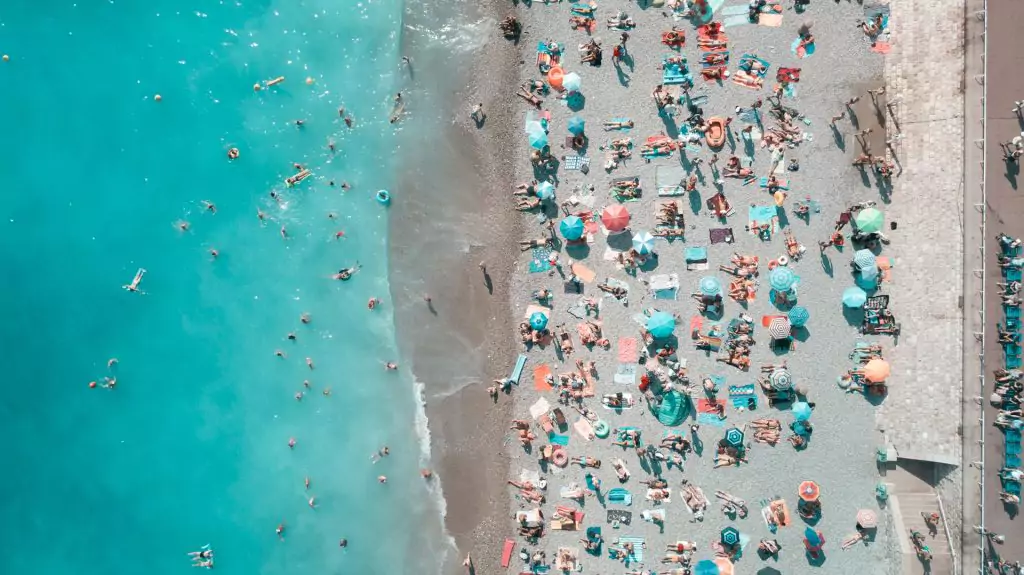
- Èze Beach: Although Èze is mostly known for its picturesque hilltop village, at the base of the promontory lies one of the most well-preserved and sheltered beaches on the Côte d’Azur.
- Plage des Marinieres: Since our longest itinerary will take you to the beautiful suburb of Villefranche-sur-Mer, going for a swim at the main beach in town is a wonderful idea. As this area tends to be quainter, it’s a great spot for families.
- Abel Baliff Beach: More than just this specific stretch of sand, the Massif de l’Esterel (for many, Côte d’Azur’s natural border) is an area filled with scenic trails and idyllic beaches. Plus, this is one of the few places in the region where you can easily escape the crowds.
- Paloma Beach: The best spot on the French Riviera for snorkeling, this beach can be found in the small paradise of Saint-Jean-Cap-Ferrat. Although part of the beach has been privatized, a generous portion remains open to all visitors free of charge.
- Plage du Midi: If a place is popular, there are usually very good reasons for that. While not the most original of recommendations, staying at this beach usually means a well-spent day by the exclusive shores of Cannes.
- Plage Île Sainte-Marguerite: On the other hand, if you want to enjoy a slightly off-the-beaten-path (and less crowded) beach near Cannes, it’s worth taking the short ferry trip to Sainte-Marguerite Island, whose local beach is nothing short of delightful.
- Juan-les-Pins: One of the most famous seaside resorts on the Côte d’Azur, this mini-town is located right next to Antibes. There are several beaches worth visiting in the area, but the most popular is simply called Grande Plage.
- Promenade des Anglais: Although not a beach per se, but rather an extensive waterfront promenade spanning over 7 km, this place stands as a true icon of Nice. Along the promenade, you’ll find literally dozens of public and private beaches – they may not be the most beautiful or well-maintained, but they’re the quickest solution for when it gets too hot in the region’s largest city.
- Pampelonne Beach: The most popular of all the beaches in Saint-Tropez, Pampelonne is a true classic. Fine golden sands, crystal-clear blue waters and sunshine for most of the year. No wonder why this French haven became trendy 50 years ago.
French Riviera Travel Guide – Full itineraries for 3, 5 and 7 days
So that this blog post doesn’t turn into an encyclopedia, we’ve decided to create separate articles for each itinerary.
You can check them through the following links:
- French Riviera 3-Day Itinerary – Best Places to visit in Nice
- French Riviera 5-Day Itinerary – Highlights of Côte d’Azur
- French Riviera 7-Day Itinerary – What to See and Do in One Week
Heymondo offers a wide range of travel assistance insurance policies. They combine the best quality, service and price with various levels of coverage, so you’re covered on your weekend getaways and long trips. Buy insurance »

